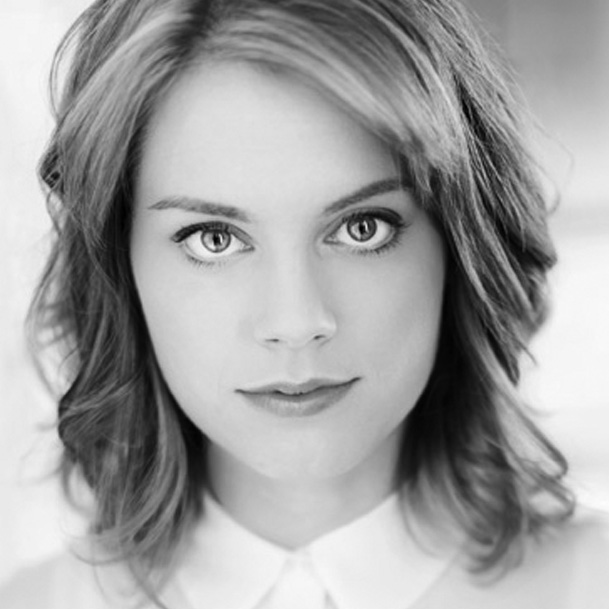All the Girls Who Fell in Love with Whales
I skipped the last half day of the conference and went to the aquarium where the last two blue whales were being held in a huge tank.
It wasn’t ethically complicated, their captivity – the ocean would have burned their thick skin.
There were many people there, many many people.
All the girls who fell in love with whales in grade six instead of horses.
I’ve written a mid-apocalyptic play, Extremophiles. It is about a mother, her unique child, and an anthropologist. The characters are in quarantine, the North has desertified, and oceans no longer support life.
It’s fictional, darkly funny, there are live puppets. It is not about climate change, and yet I grew up in Alberta, an oil province, and I’ve been making theatre for eight years that deals with how resource-extraction impacts communities. I remember the backpacking trip when I avidly started to read about climate change and ocean acidification (Elizabeth Kolbert, Gwynne Dwyer, Ronald Wright, Bill McKibben—beautiful writers all). I am fascinated by the Anthropocene Age, the time in which we are living, where humans have permanently altered the earth’s natural systems. Climate change is an unavoidable undertone in my work.
I was curious about how others navigate the shoals of climate change + theatre, so I spoke to Chantal Bilodeau (New York), Ellen Close (Calgary), Eric Rhys Miller (Sunshine Coast), Evalyn Parry (Toronto), and Annabel Soutar (Montreal) to ask a few questions that have come up for me as I create theatre that intersects with this topic.
1 – Is ‘climate change’ a dirty word? Do you use it in publicity?
I’ve been shying away from it lately, hence the question. The words suggest to me that there may be an information dump ahead and that the piece won’t necessarily be enjoyable, and yet… if it is an aspect of the play…
Evalyn Parry, artistic director of Buddies in Bad Times, doesn’t “hesitate to use the word climate change” when relevant, as it is in her play To Live in the Age of Melting.
We are in a world “where people look for reasons not to talk to each other,” says Annabel Soutar, who creates documentary theatre such as The Watershed, which is about the Experimental Lakes Area. She offers that words like climate change can suggest the issue is partisan so it doesn’t serve her goal to “create spaces where people can speak to one another about thorny issues.”
“Why can’t it just be a play? Do we have to say it is about climate change or can it just be part of it?,” asks playwright Chantal Bilodeau who is working on a series of plays, The Arctic Cycle. As the founder of the international network Artists and Climate Change, she uses the words but looks forward to a time when it will be a given that a piece is addressing climate change in some way.

Georgina in tech. Photo by Dahlia Katz
2 – Do you prefer fact or fiction as an access point?
Many, myself included, work with fact and fiction or some blend of the two. I’ve strongly worked from a research-based perspective in previous plays, and this time the research has bubbled into fiction.
Ellen Close, artistic producer at Downstage Theatre, is co-author of My Family and Other Endangered Species, an adaptation of a novel by Carla Gunn about a boy’s anxiety around extinctions. Close has predominantly used fiction and says, “My interest artistically has been about individuals trying to respond to systemic problems, so I’ve found the best way to engage with that is on the level of smaller stories. With fiction we can manipulate them to include relevant factors. In documentary work, your play is as good as your tape. You might know a story is out there but someone has to say it.”
For Soutar and Parry, fact has been an access point. Parry’s strategy involves speaking to non-experts about how they relate to an issue, like Arctic sovereignty in To Live in the Age of Melting. Soutar “never finds fact restricting” and uses it as a point of investigation. She talks about how relying on interviews means she can’t impose a thesis and instead must implicate herself in a conversation.
3 – How do you end a play about climate change?
Close observes that kids are often taught “if they recycle and turn off the lights everything is going to be fine—and it’s not. They either see through it in the moment or there is an awful reckoning later.” This seems to be the problem of ending a play about climate change. How to avoid didacticism as well as false optimism, how to offer the scary truth, that we are on a course for disaster, without shutting down the ability of the audience to respond.
Rhys Miller, artistic producer of The Only Animal, points out that the role of art is to offer possibility and imagination. He says we are in a “post-ironic world” living in “technicolour insanity” and he aims to invite an audience to a “connected, open place and offer possibility and widening.” Parry never positions herself as an expert and tries “not to draw conclusions or create a final finish so that the audience can draw their own complex conclusions.” Soutar aims to offer “truth without blame. The blame-game is the route to destruction.” She aims for “truth with grace and honesty.”
Close mused that climate change is a topic that may come up against the limits of our brains and our capacity to hold “sustained global thinking. We are going to have to continue to make a series of very tough decisions between something that’s not very good and something marginally worse—are we equipped for those conversations, to make those decisions?”

Georgina in front of one of the murals from the project A Love Letter to the Great Lakes
I was interested in the fact that every artist I spoke with talked about the increasing polarization of discourse. Fact or fiction, labelling the work as related to climate change or not, the common goal is to invite different people into a shared space and open up the possibility of thinking in a slightly different way or considering, as Close said, “why we think the way we do.” Rhys Miller said that climate change is “a frame” that connects many different topics: from runaway capitalism to xenophobia and violence. Whether I choose to name the framing device or not, I am an Anthropocene girl, making Anthropocene Art.
On that backpacking trip seven years ago, the day I had read an amazing article about ocean acidification, I happened upon a ring of lifeguards keeping a crowd of people back as palm-sized sea turtles kicked up wee paddles of sand, turtled towards the sea, and disappeared into surf too strong for humans. On the left, ocean and setting sun, on the right, the neon glow of an OXXO (the Mexican 7-Eleven), and between the two, this crowded meeting point.
It’s a scene that captured the Anthropocene for me: the absurdity, beauty, and a held, collective moment of humans recognizing nature. It’s a scene that inspires my approach in Extremophiles. Here we go. I hope to see you at the show, and I hope to talk to you after, whether we think differently or not.









Comments